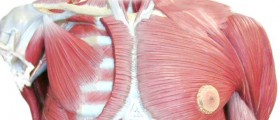
Charcot-Marie-Tooth disease is otherwise known as CMT and it is considered to be one of the most common neurological disorders which a person can inherit. According to available data, one person out of 2,500 is affected by this condition. Other names for this neurological disorder are hereditary motor and sensory neuropathy or peroneal muscular atrophy. This condition comprises a group of disorders caused by mutations in genes which affect the normal function of peripheral nerves. These peripheral nerves are located outside the brain and spinal cord and act as suppliers for the muscles and sensory organs in the limbs.
What is Charcot-Marie-Tooth Disease?
One of the main characteristics of this neurological condition is weakness in the foot and lower leg muscles. Due to this effect, patients end with a foot drop and a high-stepped gait which is accompanied by repeated falls. In addition, a person diagnosed with CMT is highly likely to have certain foot deformities like high arches and hammertoes. Hammertoe is a condition where the middle joint of a toe is bent upwards. Both of these deformities of the foot occur due to the fact that small muscles in the feet are not strong enough. When the disease has progressed, a person may face further problems like weakness and muscle atrophy in hands. When that happens, a lot of problems with fine motor skills may occur. Pain is also commonly reported and it may range from mild to severe.
The first symptoms of CMT can occur at all ages but they most commonly affect individuals who are in their adolescent years and early adulthood. However, it is not unusual to experience disease for the first time in the mid-adulthood. The progression of symptoms is not a fast one but rather gradual one. When motor nerves degenerate, a person experiences weakness in muscles and atrophy of various parts of the extremities such as the legs, arms, hand or feet. The degeneration of sensory nerves ends up in a reduced ability of a person to feel cold, heat or pain.
There is not only one form of this condition but many of them. The severity of symptoms varies as well and in some cases those who are affected by the condition may not even know that they are. According to experts, CMT is not considered to be fatal and in most cases patients have a normal life expectancy.
Is There any Treatment?
According to experts, there is no known cure for this condition. The best options are physical therapy, occupational therapy, braces and certain other orthopedic devices which are used in order for the person to be able to handle the symptoms of CMT. In some cases even an orthopedic surgery is an option. The goal of all the possible treatments is to reduce the symptoms of the condition and make a person more able to live with the disease. In case of severe pain, a patient is usually prescribed certain painkillers. However, before any treatment can start a person needs to be properly diagnosed.
The diagnosis starts with taking a patient history, family history and neurological examination. The doctor will ask the patient about the duration of the symptoms and their nature. He/she will also inquire whether some other member of the family is diagnosed with the disease. When an examination is considered, the doctor will look for muscle weakness in the extremities, decreased muscle bulk, reduced tendon reflexes and sensory loss. Deformities of the foot will also be looked for. If there are signs of other orthopedic problems such as mild scoliosis or hip dysplasia, the doctor may also suspect of CMT. One of the most obvious signs of CMT is nerve enlargement which can even be seen through the skin in some cases. These enlarged nerves are medically called hypertrophic nerves.
Electrodiagnostic tests are also ordered if the physician suspects that the patient is suffering from CMT. These tests comprise nerve conduction studies and electromyography or EMG. In the end, if the physician strongly suspects that the patient is suffering from CMT, he/she may perform a nerve biopsy in order to confirm the diagnosis. In order to perform a nerve biopsy, the physician will remove a small piece of the peripheral nerve. This is done through the incision in the skin. In almost all cases it is part of the nerve that runs down the calf of the leg that is being removed. A microscope is then used in order for the nerve to be examined. In case of patients with CMT1, there are signs of abnormal myelination. On the other hand, those who suffer from CMT2 will be affected by axon degeneration.
What is the Prognosis?
There are a lot of cases when people are not even aware that they are affected by this condition. This is due to the fact that symptoms are not the same in everyone. In the majority of patients the prognosis is good because the disease is not fatal and most patients have a normal life expectancy.




-Causes,-Symptoms,-Diagnosis,-Treatment_f_280x120.jpg)












Your thoughts on this
Loading...